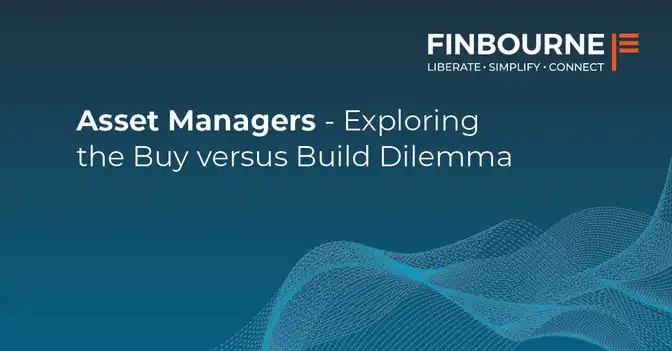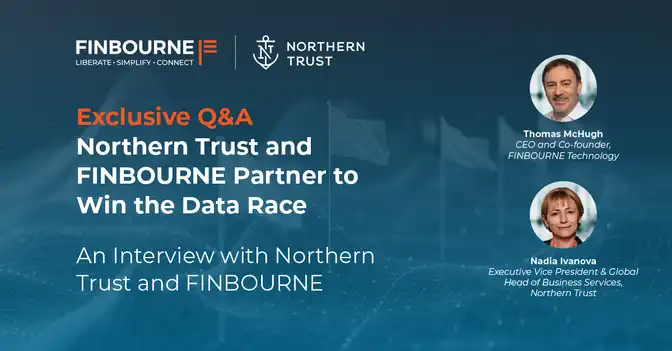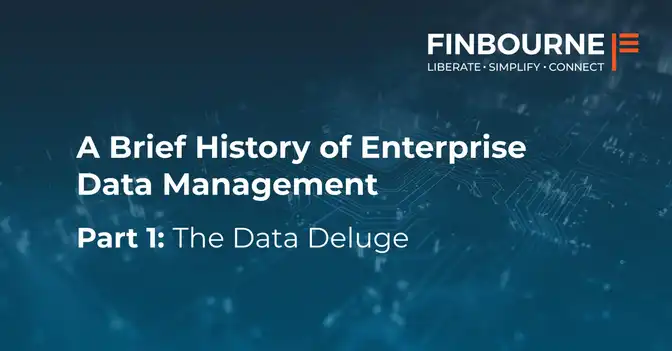Co-authored by Neil Ryan, Regulatory Lead and Chris Brook, Co-Founder and Head of Platform Architecture at FINBOURNE Technology.
In this two-part blog, we uncover the benefits of a fit-for-purpose CT, combined with an interoperable API framework and a holistic approach to organisational data; and why together, they are key to unlocking the value of transaction data in a consolidated tape, for firms and the market as a whole.
As the process of refining the requirements for a bond Consolidated Tape (CT) draws to a close, buy-side, sell-side, and regulatory bodies are looking past the data quality challenges previously identified, to the practicalities of how a CT will deliver data.
In our last CTP whitepaper – The ABC’s of the CTP – we identified the key aspects that need to be addressed to maximise the efficiency of CT data, whilst minimising cost.
We have also worked with industry bodies, leveraging our Modern Financial Data Stack, to contribute evidence-based research ahead of the creation of a CT, including:
- The Dutch Authority for the Financial Markets high-level technical principles for the corporate bond consolidated tape in the European Union – in which FINBOURNE contributed to the report, as part of our role in the AFM Innovation hub.
- AFME’s MiFIR 2021 Sovereign Bond Trade Data Analysis and Risk Offset Impact Quantification report, published this month (and an earlier report in April 2022), in which they emphasise a clear need for a longer deferral period, for the publication of larger or illiquid trades.
In the following blog, we will examine how data would flow through a CT and how it could be used inside an investment firm’s operational landscape. We also look at how open APIs not only increase the accessibility of CT data, but also help it to be integrated throughout the functions in an organisation, to deliver deeper data-led insights and market opportunities.
Making the data usable
Before we consider how CT data might be used within an organisation (see our next instalment for this), we will first examine how the data will be obtained from the upstream trade-data contributors, and how it would be distributed to consumers.
Venues, exchanges and APAs each operate different technology infrastructure, processes and practices. In the future, they will need to provide real-time data to a CT, cheaply and efficiently. FINBOURNE believes that standard, open interfaces should be adopted with these contributors, to ensure efficient integration and timely delivery of data.
Where practical, venues could contribute data to the CT via existing messaging standards, such as FIX. Furthermore, FIX could also be adopted as the API standard to distribute data to downstream consumers of the CT, allowing them to obtain the full consolidated trade feed in real-time.
However, consumers of the CT will undoubtedly have different technical capabilities with regard to ingesting, storing, and re-distributing data:
- Some firms may be satisfied with a raw real-time data feed, especially if they already have the infrastructure and expertise to handle market data feeds at scale.
- Others may prefer to use APIs to query data in-situ, with the CT platform doing the heavy-lifting of handling the data.
- Some consumers may simply want a web interface that business users can use to explore and interact with the data, without requiring any specialist software development expertise.
As such, we expect the CTP will need to also provide data warehousing facilities for storage of records, together with tools that can flexibly analyse the data. This would facilitate all the scenarios above, as well as supporting retrospective analysis of historical data – something for which we have already observed demand.
The benefit of APIs
For FINBOURNE, the value of API-enabled services is that they can be composed together to create powerful systems that have more utility than the sum of their parts. The ability to access CT data via open APIs will allow MiFID transparency data to be leveraged throughout the investment chain.
Whilst market participants may need to do some preparatory work to be able to exploit these new APIs, the benefits of having a suitable API strategy are manifold, and include:
Timely visibility of liquidity
- Taking an end-to-end, API-first approach is necessary to achieve the best latency possible, prioritisting the timeliness of data to deliver optimal visibility of liquidity.
Low-cost
- Directly connecting to a CT, through open APIs, will minimise cost and allow access to the full suite of its capabilities.
Ease of access
- We believe an open-API approach also best fulfils the CMU goals associated with the creation of a CT, particularly around attractiveness and ease of access for global investors.
Designing a single API solution to fulfill all these requirements will be a challenge, however. A balance must be struck between delivering sufficient flexibility to sophisticated users, whilst providing simple integrations that support the most common use-cases.
Stay tuned for part two of this blog, where we will dive a little deeper into the different approaches to incorporating CT data within an organisation, and why one size does not fit all…




